Our Blue Planet in Danger
8th June 2023
It is o-fish-ially World Ocean Day on the 8th of June! This is such an important day because it reminds us just how crucial healthy oceans are to our planet and what we can do to help them. Our planet is primarily covered in water, with rivers, lakes and oceans occupying a whopping 70% of the Earth’s surface. But the ocean is in trouble. Things like pollution, overfishing, and habitat destruction are really impacting the health of the seas. We’ve been damaging the oceans for a long time now, but marine conservation is actually quite a new concept in the scientific world. It was only in the 1960s that it was becoming acknowledged by scientists that marine ecosystems were being harmed and large fish populations declining.
It is important that we look after our ocean, after all, the sea is the lungs of our planet. Phytoplankton, which is microscopic marine algae, is estimated by scientists to provide at least 50% of our atmosphere’s oxygen. This is more than all the trees on the planet combined! So why are we treating it so poorly? Pollution is one of the biggest threats that is impacting the health of marine life and ecosystems. Plastic is actually the most common element that is found in the sea, and it is so harmful to the ecosystem because it can’t decompose and will just stay there, floating along, until it is mistaken as food by sea creatures. Instead of breaking down like other substances, it just gets smaller and smaller until it is microplastic; this way it never really disappears. It is estimated that at least 8 million tonnes of plastic are ending up in the ocean each year. That is like a bin lorry full of plastic dumping into the ocean every minute. According to Greenpeace, there are as many as 51 trillion microplastic particles in the ocean, which is 500 times more than the number of stars in the Milky Way! Between the Island of Hawaii and the coast of California lies the Great Pacific Garbage Patch and this is exactly what it sounds like – a great ol’ pile of rubbish in the Pacific. Containing an estimated 1.8 trillion pieces of rubbish and covering an area three times the size of France – it is a real problem. Not all rubbish accumulates in patches like the Great Pacific Garbage Patch, however. Some sinks to the ocean floor, some is eaten by birds, fish and other marine life, and some washes up on the shore. When I was 17, I went to Tanzania and spent a couple of weeks at a campsite in Tanga which is by the sea. Flip-flops were getting washed up on these beaches – mountains of them! Often it can take over a hundred years for things like flip-flops to decompose. So, we all sat down with some of the locals, and we carved the flip-flops into toys for the children of the village. This is an example of how people are trying to fight pollution by recycling discarded items into something new and fun!
Single use plastics are such a huge problem for the marine environment. A plastic bag from the shop has an average lifespan of 12 minutes, that’s all we need them for. But it takes around 500 years for a plastic bag to decompose. The WWF have said that an estimated 100,000 marine animals are being killed by plastic pollution each year. So many wild and wonderful creatures are being affected by the plastic in the ocean. Studies have shown that plastic has been found in nearly all species of whale. Similarly, all seven species of sea turtle have been shown to have consumed plastic. I’m sure a lot of us may remember the viral video on social media a few years back when a plastic straw had to be removed from a turtle’s nose. According to the Keep Britain Tidy website, scientists have found that 100% of animals that have washed up on British shores had plastic in their stomachs.
The ocean is crucial to survival, even for us landlubbers! It is able to absorb heat from the sun which means the temperature of our planet is cooled and evenly spread. Due to human activity, our planet is getting warmer and warmer. So as the air gets hotter, the ocean absorbs extra heat from our atmosphere, which helps in delaying the impact of climate change. Our oceans are absorbing more than 90% of global warming! But if the waters carry on getting warmer, there is more chance that plants and animals may die. We have seen many thousands of species of animals move from their habitat along or near the equator to further afield because it is too warm for them. All of this moving around has an impact on the mass migrations of sea life, which can cause them to struggle to find appropriate conditions for eating and spawning. This means we are having less fishes being spawned, or less likely to survive in these conditions. As these populations of fishes deplete, it means that they are more at risk of overfishing as well. This comes with a whole host of issues! Economically, the livelihoods of families who rely on fishing for their income will be affected by this, as well as all the environmental issues that we have already been speaking about. Overfishing is linked to the high demand for eating fish, but by reducing the amount of seafood that we eat can help to tackle this overfishing issue. I personally have cut fish completely out of my diet, but just simply reducing the amount you eat, as well as checking to see if it was caught sustainably, will make such a big difference. With rising temperatures, we also see sea ice melting, which then affects people and land animals living in the Arctic as they are unable to hunt or fish due to there not being enough solid ice. This then goes on to affect coastal communities farther afield as the water levels are rising, causing floods and homes being submerged. I know that this is all very daunting and it can feel very scary, but we need to understand the threat that the oceans are facing and how this is affecting, not only the water and the animals and plants within, but also all of us so that we can make a difference. No matter how far away from the ocean you live, this will impact you and so we all need to help!
How can we help?
Here at Browns Books, we are doing anything we can to try and protect the environment and reduce our carbon footprint. There have been so many trees donated on our behalf and we are sourcing waste-free packaging for our deliveries. One big thing here is that our office is mostly made up of windows, which means we are getting vast amounts of natural light and can cut back on having lights turned on all the time. Our lights are also motion-sensitive so if a room has nobody in, we aren’t wasting electricity there. But there are simpler ways to help that you and I can do on an individual level too. A lot of us here car share. Not only does this help our pockets with the increasing fuel prices, but it also is a lot better for the environment. Our car park has also been fitted with chargers for electric vehicles which are free for employees to use if driving an electric car to and from work. As well as this, groups of colleagues here take it in turns to meal prep lunches for others which is brought in reusable lunch boxes. We all use tea bags, coffee, and the tap water in our office canteen to make our brews during the workday and we all bring in our own thermal mugs to drink at our desks. This is so much healthier for the planet because it means that Costa or Starbucks cups aren’t being used and then disposed of. The same applies with water bottles, with very few plastic bottles being bought.
There are so many fun ways that you and your friends can incorporate decisions like these into your everyday life that are beneficial to you socially, financially, as well as being environmentally better too! Here are some everyday things that I do to try and be greener at home!
1. When I go food shopping, I always take my cloth/tote bags so that I am not needing to use the plastic bags that supermarkets offer. In 2015, the 5p bag tax was introduced to the UK which saw retailers dropping plastic bag usage by 97%! In 2019, this was increased to 10p which saw the number of bags being reduced again by another 20% in 2021/2022.
2. I try my best to never use single-use plastics, such as straws and cutlery. I know that it is easier to have them sometimes – but there are so many more sustainable alternatives out there! Whenever I do go for a little caffeinated treat when I’m out and about, I just take my own reusable cup with me. Some places will even offer you a small discount for doing this as a thank you from the environment. Another thing is, whenever I am having to drive a long journey, I will take my reusable water bottle into the service station to get it filled up at the tap. This way you don’t have to spend money on a plastic bottle (tap water is free!) and you are helping the oceans!
3. If you do have to use a product that is single-use plastic, try and reuse it as much as you can! For example, you can refill your Coca-Cola bottle with water to drink instead of buying a new bottle. I have cleaned out old yoghurt pots that I have eaten and then used them to grow herbs on my windowsill, as well as old soup tins as plant pots (I know soup tins aren’t plastic – I just like to reuse and recycle as much as I can!).
4. Donate old clothes. Thrifting and charity shops appears to becoming back in fashion now. By selling clothes you no longer wear to other people or donating them to charity you are helping to reduce waste and make the most out of all of the energy that was used to make/ship that piece of clothing. The ‘fast fashion’ industry has sometimes been referred to as one of the most polluting industries in the world, with materials such as polyester, nylon and cotton requiring a huge number of natural resources to be produced. So even by just buying second hand clothes, you are helping your pocket and helping the planet too.
5. Tell other people to try and be green too! It may sound silly, but by just telling your friends and family some top tips to try and be more eco-friendly can be so beneficial.
My favourite way of trying to help the ocean is by educating myself. When I was younger, I would go to the zoo or the aquarium to try and learn the importance of oceans and the animals that live there. Now that I have moved away from North Yorkshire to near Hull, my house is almost directly between The Deep and Yorkshire Wildlife Park! So, I am visiting these places more often, both for fun and for my own education! I love to read books on the ocean and watch documentaries too. Anything to widen my knowledge so that I know more about what I am striving to protect. When I was at university, I studied wildlife conservation and zoo biology where I learnt that my true passion is the ocean. I wrote all of my final projects on ocean and shark conservation, including my dissertation which was on the topic of the impact of the shark fin trade on shark populations and marine ecosystems as a whole. When I studied my master’s degree in animal welfare science, ethics and law, I changed it up a bit by focusing on invertebrates (insects are the other passion in my life), and even then, I focused quite a lot on octopuses, squids and cuttlefish! Not to mention all the crustaceans, molluscs, and nudibranchs. You’re never too young or too old to learn about the sea and its wildlife. Child or adult, why not pick up one of the following books and see what amazing facts you can learn.
Below are some books that I have selected for children and adults to have a read and learn about all of the wonderful things that the deep blue has to offer! I have also included some more academic texts for those who are wanting to widen their knowledge and look into marine studies in more detail. There are some fascinating reads and some stunning illustrations that can spark a love and admiration for the creatures that call the ocean their home. I have also included one or two cookbooks/lifestyle books that contain some more plant-based recipes to help reduce fish consumption and some sustainable lifestyle choices around the home.
Academic texts:

Marine Pollution
Weis, Judith S. (Professor of Biological Sciences, Professor of Biolog
Paperback / softback
Marine pollution occurs today in varied forms--chemical, industrial, and agricultural-and the sources of pollution are endless. In recent history, we've seen oil spills, untreated sewage, eutrophication, invasive species, heavy metals, acidification, radioactive substances, marine litter, and overfishing, among other significant problems. Though marine pollution has long been a topic of concern, it has very recently exploded in environmental, economic, and political debate circles; scientists and non-scientists alike continue to be shocked and dismayed at the sheer diversity of water pollutants and the many ways they can come to harm our environment and our bodies. In Marine Pollution: What Everyone Needs to Know, Judith Weis covers marine pollution from many different angles, each fascinating in its own right. Beginning with its sources and history, the book describes in detail each common pollutant, why exactly it is harmful, why it may draw controversy, and how we can prevent it from destroying our aquatic ecosystems. Weis discusses topics like what actually happened with the Exxon Valdez, and why Harmful Algal Blooms are a serious concern. Later chapters will discuss pollutants that are only now surfacing as major threats, such as pharmaceuticals, personal care products, and metal nanoparticles, and explain how these can begin in the water and progress up the food chain and emerge in human bodies. The book's final section will discuss the effects of climate change and acidification on marine pollution levels, and how we can reduce pollution at the local and global levels.
More Details
Tides: A Very Short Introduction
Bowers, David George (Emeritus Professor of Physical Oceanography, Ban
Paperback / softback
The tide is the greatest synchronised movement of matter on our planet. Every drop of seawater takes part in tidal motion, driven by the gravitational pull of the moon and sun. At the coast, we see the tide as a twice-daily rise and fall of sea level that moves the edge of the sea up and down a beach or cliff-face. In some places, the tide is small but at others it can rise in a few hours by the height of a three storey building; it then has to be treated with great respect by those who live and work by the sea. In this Very Short Introduction David George Bowers and Emyr Martyn Roberts explore what we know about the tides. Blending clear explanations of well known tidal phenomena with recent insights in the deep ocean and coastal seas, Bowers and Roberts use examples from around the world, to tell the story of the tide, considering its nature and causes, its observation and prediction, and unusual tides and their relevance. They explore why tides have attracted the attention of some of the world's greatest scientists, from the initial challenge of explaining why there are two tides a day when the moon and sun pass overhead just once; a problem that was solved by Isaac Newton. In the 19th century, scientists unravelled the rhythms of the tide; good tidal predictions in the form of tide tables were then possible. The predictions were made on beautiful tide predicting machines constructed of brass and mahogany, some of which can still be seen in maritime museums. In the 20th century, the importance of tides as mixers of sea water became evident. As Bowers and Roberts explore, tidal mixing of the ocean is essential for maintaining its deep circulation, a key part of the climate-control system of our planet. In inshore waters, tidal mixing enhances biological productivity, influences sea temperature and turbidity and creates dramatic features such as maelstroms and tidal bores. In the 21st century, space probes are examining the effects of tidal processes on the moons of Jupiter and Saturn and the possibility of tidally-heated liquid oceans with their own ecosystems. Looking to the cutting edge of tidal research, Bowers and Roberts also consider how we can study the role of the tide in the geological and biological evolution of our own planet with innovative computer models. ABOUT THE SERIES: The Very Short Introductions series from Oxford University Press contains hundreds of titles in almost every subject area. These pocket-sized books are the perfect way to get ahead in a new subject quickly. Our expert authors combine facts, analysis, perspective, new ideas, and enthusiasm to make interesting and challenging topics highly readable.
More Details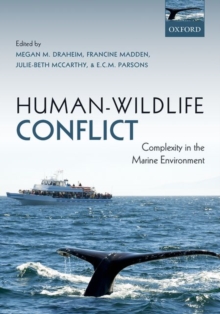
Human-Wildlife Conflict
Draheim, Megan (Visiting Assistant Professor, Visiting Assistant Profe
Paperback / softback
Human-wildlife conflict (HWC) has classically been defined as a situation where wildlife impacts humans negatively (physically, economically, or psychologically), and where humans likewise negatively impact wildlife. However, there is growing consensus that the conflict between people about wildlife is as important as the conflict between people and wildlife. HWC not only affects the conservation of one species in a particular geographic area, but also impacts the willingness of an individual, a community, and wider society to support conservation programs in general. This book explores the complexity inherent in these situations, covering the theory, principles, and practical applications of HWC work, making it accessible and usable for conservation practitioners, as well as of interest to researchers more concerned with a theoretical approach to the subject. Through a series of case studies, the book's authors and editors tackle a wide variety of subjects relating to conflict, from the challenges of wicked problems and common pool resources, to the roles that storytelling and religion can play in conflict. Throughout the book, the authors work with a Conservation Conflict Transformation (CCT) approach, adapted from the peacebuilding field to address the reality of conservation today. The authors utilise one of CCT's key analytic components, the Levels of Conflict model, as a tool to provide insight into their case studies. Although the examples discussed are from the world of marine conservation, the lessons they provide are applicable to a wide variety of global conservation issues, including those in the terrestrial realm. Human-Wildlife Conflict will be essential reading for graduate students and established researchers in the field of marine conservation biology. It will also be a valuable reference for a global audience of conservation practitioners, wildlife managers, and other conservation professionals.
More Details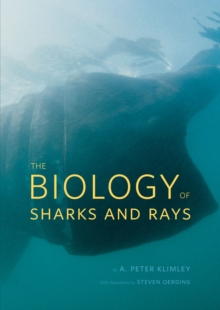
The Biology of Sharks and Rays
Klimley, A. Peter
Hardback
"The Biology of Sharks and Rays" is a comprehensive resource on the biological and physiological characteristics of the cartilaginous fishes: sharks, rays, and chimaeras. In sixteen chapters, organized by theme, A. Peter Klimley covers a broad spectrum of topics, including taxonomy, morphology, ecology, and physiology. For example, he explains the body design of sharks and why the ridged, tooth-like denticles that cover their entire bodies are present on only part of the rays' bodies and are absent from those of chimaeras. Another chapter explores the anatomy of the jaws and the role of the muscles and teeth in jaw extension, seizure, and handling of prey. The chapters are richly illustrated with pictures of sharks, diagrams of sensory organs, drawings of the body postures of sharks during threat and reproductive displays, and maps showing the extent of the species' foraging range and long-distance migrations. Each chapter commences with an anecdote from the author about his own personal experience with the topic, followed by thought-provoking questions and a list of recommended readings in the scientific literature. The book will be a useful textbook for advanced ichthyology students as well as an encyclopedic source for those seeking a greater understanding of these fascinating creatures.
More Details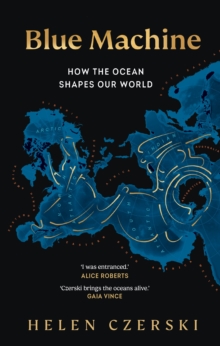
Blue Machine
Czerski, Helen
Hardback
RADIO 4 BOOK OF THE WEEKFINANCIAL TIMES 2023 BOOK OF THE YEARTHE TIMES SCIENCE BOOK OF THE YEAR: 'This beautifully written, sweeping guide shows how the deep movement of the seas have ruled our lives in unexpected ways over millennia.''The world needs a 'David Attenborough for physics' and Helen Czerski is a prime contender - she's brilliant, clear, passionate, modern and inspiring.' - Emma Freud, BBC Radio 4 Loose Ends'A dazzle of stories beautifully told...Outstanding ... Her readers will see the seas anew.'Horatio Clare, Telegraph'Excellent and important.' Spectator'Czerski is a wonderful writer ... Blue Machine really does change the way you see the world.' Daily Mail'In Helen Czerski's hands, the mechanical becomes magical. An instant classic.'Tristan Gooley, author of How to Read Water'Blue Machine is quite simply one of the best books I have ever read.'Dr George McGavin, zoologist, entomologist and broadcaster'A fascinating dive into the essential engine that drives our world.'Gaia Vince, science journalist, broadcaster and author of Nomad Century All of the Earth's ocean, from the equator to the poles, is a single engine powered by sunlight - a blue machine. Earth is home to a huge story that is rarely told - that of our ocean. Not the fish or the dolphins, but the massive ocean engine itself: what it does, why it works, and the many ways it has influenced animals, weather and human history & culture. In a book that will recalibrate our view of this defining feature of our planet, physicist Helen Czerski dives deep to illuminate the murky depths of the ocean engine, examining the messengers, passengers and voyagers that live in it, travel over it, and survive because of it. From the ancient Polynesians who navigated the Pacific by reading the waves to permanent residents of the deep such as the Greenland shark that can live for hundreds of years, she explains the vast currents, invisible ocean walls and underwater waterfalls that all have their place in the ocean's complex, interlinked system. Timely, elegant and passionately argued, Blue Machine presents a fresh perspective on what it means to be a citizen of an ocean planet. The understanding it offers is crucial to our future. Drawing on years of experience at the forefront of marine science, Helen Czerski captures the magnitude and subtlety of Earth's defining feature, showing us the thrilling extent to which we are at the mercy of this great engine. ................................... 'Helen Czerski weaves together physics and biology, history and science, in a beautifully poetic way.'Professor Alice Roberts
More DetailsGrown up books:
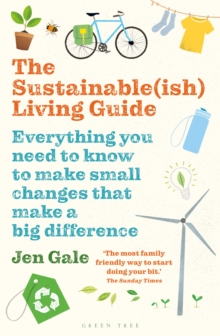
The Sustainable(ish) Living Guide
Gale, Jen
Paperback / softback
Easy, do-able, down to earth ideas and suggestions for everyone to help save the planet. If you want to save the planet, but your to-do list is already pretty long and remembering your re-usable coffee cup feels like a Herculean task, then this is the book for you. Covering every aspect of our lives from the stuff we buy and the food we eat to how we travel, work, and celebrate, this book provides stacks of practical, down to earth ideas to slot into your daily life, alongside a gentle kick up the butt to put your newfound knowledge into action. Practical tips include unsubscribing from all the tempting emails that drop into your inbox with details of the newest clothing range or the latest sale, and keeping a mug next to your kettle to work out how much water you actually need to boil each time, as over-filling kettles costs British households £68 million on energy bills each year. Find out how to fit "sustainable living" into your life, in a way that works for you. Change your impact without radically changing your life and figure out the small steps you can make that will add up to make a big difference (halo not included).
More Details
Emperors of the Deep
McKeever, William
Paperback / softback
Sharks are ruthlessly efficient predators, the apex of 450 million years of evolution. They are older than trees, have survived five extinction events and are essential to maintaining balanced ocean ecosystems, but how much do we really know about their lives? The first book to reveal the hidden world of sharks, Emperors of the Deep draws upon the latest scientific research to examine four species in detail – mako, tiger, hammerhead and great white – as never before. An eye-opening tour of shark habitats ranges from the coral reefs of the Central Pacific where great whites mysteriously congregate every autumn in what researchers call a festival for sharks, to tropical mangrove forests where baby lemon sharks play in social groups and to the frigid waters of the North Atlantic, home to 400-year-old Greenland sharks, the world’s longest-lived vertebrates. McKeever also traces the evolution of the myth of the ‘man-eater’ and exposes the devastating effects of the fishing industry on shark populations: In 2018 only four people died in shark attacks while we killed 100 million sharks. At once a journey through the misunderstood world of sharks and an urgent call to protect them, Emperors of the Deep celebrates these iconic predators that continue to capture our imagination – and that desperately need our help to survive.
More Details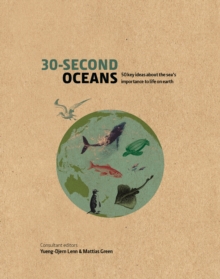
30-Second Oceans
Green, Mattias
Hardback
This information-packed book is the complete guide to everything you need to know about the world's oceans, with each conceptOceans cover two thirds of the Earth’s surface and are the driving force behind our weather systems, taking warm and cold water around the globe. Understanding solar radiation, currents, and rising sea levels are vital starting points to understanding and dealing with global warming, and this book covers these and many more essential topics in easily accessible chunks. Join expert authors on a tour of the world’s oceans, taking in waves, continental shelves, icebergs, underwater forests, monsoons, and coral reefs along the way. Learn about the different characteristics of the world’s major oceans, the amazing array of marine life that exists at different depths, how tides work, and what pollution is doing to the seas. There’s never been a more important time to get to grips with how the oceans work. The 30 Second series presents concise, informative guides to the most important topics which shape the world around us, presenting terms which are key to understanding the subject in 30 seconds, 300 words, and one image.
More Details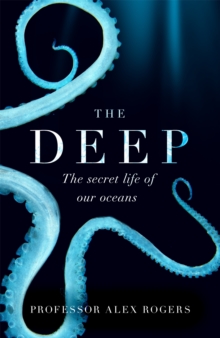
The Deep
Rogers, Alex
Paperback / softback
There's so much we don't know about what lies deep beneath the ocean's surface - and the time to find out is growing increasingly precious . . . Professor Alex Rogers is one of the world's leading experts in marine biology and oceanology, and has spent his life studying the deep ocean - and in particular the impact of human activity on the ecosystems of the oceans. In this timely, galvanising and fascinating book - replete with stunning photography of strange and beautiful creatures - Professor Rogers offers a fundamentally optimistic view of humanity's relationship with the oceans - and also a very personal account of his own interaction with the seas.
More Details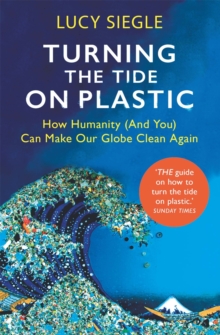
Turning the Tide on Plastic
Siegle, Lucy
Paperback / softback
Enough plastic is thrown away every year to circle the world 4 times More than 8 million tonnes of plastic enter the oceans each year 300 million tonnes of new plastic is produced every year An estimated 15-51 trillion pieces of plastic now litter the world's oceans 38.5 million plastic bottles are used every day in the UK A million plastic bottles are used per minute around the world 500 million plastic straws are used per year Without big action, at the current rate, pieces of plastic will outnumber fish in the ocean by 2050. That is the legacy we are leaving our children and grandchildren. Plastic flows into our lives from every direction and most of it is not recycled. Instead it is incinerated or ends up in landfill, where it will sit for hundreds of years, or enters the world's seas where it fragments into tiny pieces to become microplastics - the environmental scourge of our times. Many of us had assumed that governments, brands and waste authorities were dealing with plastic on our behalf. But the impact of shows such as Blue Planet along with national beach cleans and high-profile campaigns have resulted in a collective wake-up call. If there were plans and strategies, they have not worked as we imagined. It would be easy to feel despondent but instead we need to turn our anger and emotion into action, starting by making a big dent in our own enormous consumption. Turning the tide on Plastic is here just in time. Journalist, broadcaster and eco lifestyle expert Lucy Siegle provides a powerful call to arms to end the plastic pandemic along with the tools we need to make decisive change. It is a clear-eyed, authoritative and accessible guide to help us to take decisive and effective personal action. Because this matters. When it comes to single-use plastics, we are habitual users, reaching out for plastic water bottles, disposable coffee cups, plastic straws and carrier bags multiple times a day. If only 12 of us adopt Lucy's 'reduce, rethink, refill, refuse' approach, we could potentially ditch 3K-15K single items of plastic in a year. When we consider our power as influencers - whether at school, the hairdressers, at work or on the bus - we suddenly become part of something significant. So now is the time to speak up, take action and demand the change you want to see in the ocean, in the supermarket aisles and on the streets. It's time to turn the tide on plastic, and this book will show you how.
More DetailsYounger books:
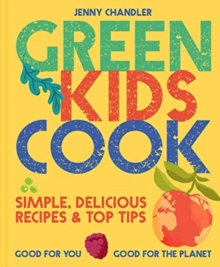
Green Kids Cook
Chandler, Jenny
Paperback / softback
Jenny Chandler, is back with Green Kids Cook, after focusing on classic family recipes and techniques in Cool Kids Cook, she is here with over 50 easy and adaptable recipes to teach the cooks of the future how to eat well, look after themselves and think about the planet all at the same time. With spreads on the environment and craft projects too. There is a massive rise in interest in veganism, vegetarian cooking and reducing meat consumption and, whilst this book is not purely plant-based, the world of vegetables, grains, pulses, nuts and seeds are at its core, with the odd tip about using sustainable meat and fish. It’s undeniable that, with rising levels of obesity and all the related health issues, we need to get kids eating more veg; there can be no better way to get children eating more greens than letting them take the reins in the kitchen. Where Jenny’s earlier book, Cool Kids Cook, focused on classic family recipes and basic techniques, Green Kids Cook is about learning to cook and eat in the most environmentally sound and sustainable way we can, and having fun with it too – with recipes for Breakfasts, Snacks, Soups & Salads, Mains and Sweets, this is an inspirational and empowering cookbook for kids everywhere.
More Details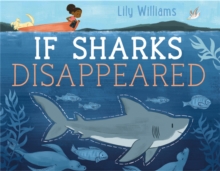
If Sharks Disappeared
Williams, Lily
Paperback / softback
A beautifully illustrated narrative non-fiction picture book that imagines the consequences of a world without sharksA healthy ocean is home to many different kinds of animals. They can be big, like a whale, tiny, like a shrimp, and even scary, like a shark. Even though sharks can be scary, we need them to keep the oceans healthy. Unfortunately, due to overfishing, many shark species are in danger of extinction, and that can cause big problems in the oceans and even on land. What would happen if this continued and sharks disappeared completely?Artist Lily Williams explores how the disappearance would affect other animals across the whole planet in this clever book about the importance of keeping sharks, and our oceans, healthy. Perfect for children aged 5 and up, this book is a great introduction to the food chain and some of the dangers facing our planet.
More Details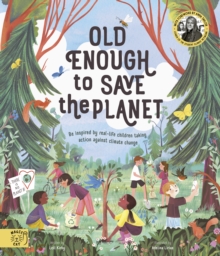
Old Enough to Save the Planet
Kirby, Loll
Paperback / softback
Meet kids – just like you – taking action against climate change. Learn about the work they do and discover how the future of our planet starts here… with you.
More Details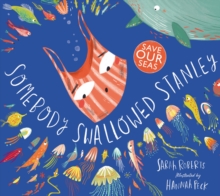
Somebody Swallowed Stanley
Roberts, Sarah
Paperback / softback
“Plastic bags don’t belong in the sea!” As read by Tom Hardy on Cbeebies Bedtime Stories Everybody has a taste for Stanley - and the other ocean creatures just keep mistaking him for a delicious treat - but this is no ordinary jellyfish. Most jellyfish have dangly-gangly tentacles, but Stanley has two handles… Other jellyfish have a magical glow, but Stanley has stripes… Because Stanley (spoiler alert) is a plastic bag! A beautifully illustrated picture book with a powerful message about plastic pollution from environmental expert Sarah Roberts. The perfect gift to introduce children to the issues of plastic in our oceans Brilliant for teachers to read to children in class when introducing them to pollution issues PRAISE FOR SOMEBODY SWALLOWED STANLEY ‘Perfectly judged for pre-schoolers … a neat reuse-and-recycle message, with a memorable no-plastic-in-the-ocean hook’ TLS ‘An ideal springboard for further discussion about protecting the natural world. Lively full-page illustrations accompany the rhythmic, repetitive text, which is perfect to read aloud’ BookTrust ‘This simple, effective and entertaining story speaks powerfully to a new generation of potential eco warriors’ Lancashire Evening Post ‘A wonderful book […] A fun and brightly illustrated picture book with a clear message that plastic does not belong in the sea.’ Books for Topics
More Details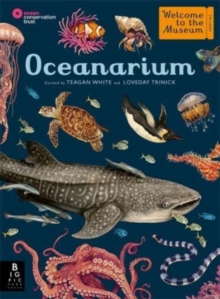
Oceanarium
White, Teagan
Hardback
Welcome to the museum that is always open to explore... Step inside the pages of Oceanarium to enjoy the experience of a museum from the comfort of your own home. This stunning offering from the Welcome to the Museum series guides readers around the world's oceans, from sandy shorelines to the deepest depths. Get up close and personal with giant whale sharks, tiny tropical fish, majestic manatees and so much more, travel the world from frozen Arctic seas to shimmering coral reefs, and learn why it is so important that we protect our oceans. Intricate artwork by rising star Teagan White combines with expert text by education officer Loveday Trinick from the National Marine Aquarium, UK. A stunning exploration of the underwater world, and a must-have for any animal enthusiast.
More DetailsThere is a lot of importance when it comes to protecting the oceans, and so many simple (and sometimes even fun) ways to help. Whether you pick up a piece of litter next time you walk past it on the beach, or you start driving an electric car! Nothing is too big or too small – it all helps to make a difference. So, this Ocean Day (and every day!), see what you can do to try and make a change and help our planet.
Kat, Content Selection Team
